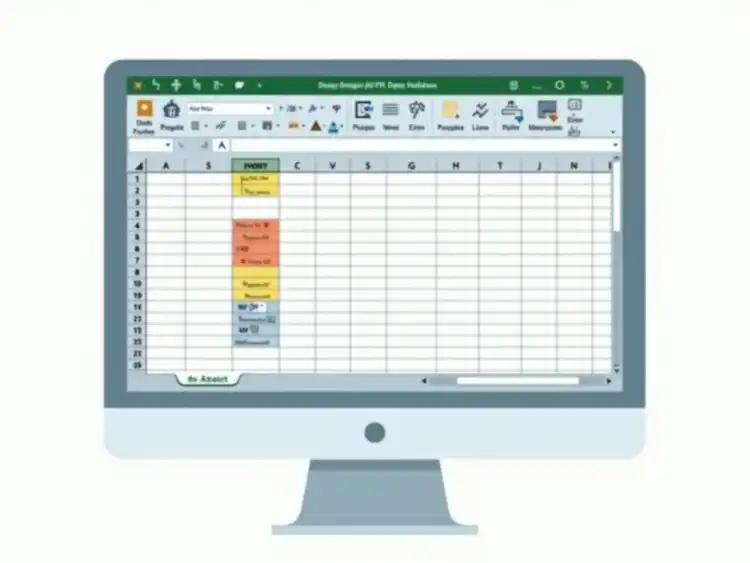![Excel Data Validation Guide - Simple Techniques for Accurate Data Entry]()
Excel Data Validation Made Simple
In a world where data drives decisions, ensuring accuracy is non-negotiable. With Excel Data Validation, you can safeguard your datasets against errors and inconsistencies, ultimately enhancing your decision-making process.
- Understand the importance of Excel Data Validation in maintaining data integrity.
- Learn how to set rules for data entry, limiting inputs to specific types like whole numbers and dates.
- Discover best practices for integrating data validation into daily workflows for consistent accuracy.
- Explore effective training techniques to ensure team members are proficient in data validation methods.
- Identify additional resources and tools to enhance your understanding and application of data validation.
Understanding Excel Data Validation
When working with spreadsheets, ensuring that your data is correct is vital. This is where Excel Data Validation comes into play. It allows you to control what users can enter into a cell, which helps maintain data integrity and accuracy.
Data validation in Excel is like setting rules for your data. For example, you can limit entries to whole numbers, dates, or even specific lists of items. This is particularly helpful when you want to prevent mistakes that could lead to erroneous conclusions in your analysis.
Why Use Data Validation?
There are several reasons to implement data validation. First, it minimizes errors, ensuring that only valid data gets entered. Second, it enhances the quality of your data, making it reliable for decision-making.
📈 Updated Content & Research Findings
▼
🔄 Enhanced Excel Data Validation with Power Query - 2025-10-13
Research Date: 2025-10-13
🔍 Latest Findings: Recent studies emphasize the integration of Power Query with Excel Data Validation for enhanced data management. Power Query allows users to transform and validate data before it even enters the spreadsheet, ensuring higher accuracy and reliability in data entry processes.
📊 Updated Trends: The trend towards automation in data management continues, with more organizations adopting tools like Power Query to streamline data validation and cleaning processes. This shift highlights the importance of integrating advanced tools into traditional Excel workflows.
🆕 New Information: Updated Excel add-ins and tools, such as the Data Validation Toolkit and Excel Data Cleaner, now offer more advanced features to enhance data validation, including automated data cleaning and validation checks. These tools are becoming increasingly essential for maintaining data integrity in Excel spreadsheets.
🔮 Future Outlook: As data-driven decision-making becomes more critical, the future of Excel data validation will likely involve more AI-powered tools to predict and prevent data entry errors. This could include predictive analytics and machine learning algorithms integrated directly into Excel.
- Improved Accuracy: By restricting data types, you reduce the chance of incorrect entries.
- Consistency: It helps maintain uniformity across your dataset.
- User Guidance: Data validation can provide helpful prompts when users attempt to enter data.
Types of Data Validation
Excel offers various types of data validation to suit different needs. Understanding these options will help you choose the best method for your specific requirements.
- Whole Numbers: Limit entries to whole numbers within a specified range.
- Decimal: Allow decimal numbers only, which is useful for financial data.
- List: Create a dropdown list of acceptable values, making it easier for users to select valid entries.
- Date: Restrict entries to specific dates or a range of dates.
- Time: Limit entries to specific times.
Using these types of validations can make your spreadsheet more user-friendly and reliable. Think of it as giving your users a roadmap on what data they should be providing!
Quick Summary
Here's a brief recap of the key points discussed so far:
- Excel Data Validation is essential for maintaining data integrity and accuracy.
- Implementing data validation minimizes errors and enhances data quality.
- Different types of data validation options, such as whole numbers and lists, cater to various data entry needs.
Maximizing the Use of Excel Data Validation for Your Projects
Integrating Data Validation into Daily Workflows
To truly benefit from Excel Data Validation, it's essential to weave it into daily workflows. Start by identifying key areas where data entry occurs, such as forms or reports, and implement validation rules there. This integration helps in maintaining data accuracy consistently over time!
Here are some best practices for ensuring accurate data records:
- Always define clear criteria for each data entry field.
- Regularly update your validation rules as project requirements change.
- Encourage team members to report any issues they encounter with data entries.
Training team members on how to utilize these techniques is also crucial! Make sure everyone understands the importance of data validation and how it can ease their workload while improving accuracy.
Tips for Training Team Members on Data Validation Techniques
Training is key to getting everyone on board with data validation practices. Start with hands-on sessions that allow team members to practice setting up validation rules. It's also helpful to provide guidelines and reference materials they can revisit later.
- Conduct workshops that cover the basics of data validation.
- Provide step-by-step guides for implementing common validation scenarios.
- Encourage peer learning by having experienced users mentor their colleagues.
Resources for Further Learning on Data Validation
As you and your team become more familiar with data validation, consider exploring additional resources to deepen your understanding. There are many excellent online tutorials and courses that can enhance your Excel proficiency!
Recommended Online Tutorials and Courses for Excel Proficiency
Here are some valuable resources to check out:
Useful Tools and Add-Ins for Enhanced Data Validation
Besides built-in features, there are numerous tools and add-ins that can enhance your data validation process. These resources can help automate validation and improve overall data management!
- Data Validation Toolkit: Offers advanced validation options.
- Excel Data Cleaner: Helps clean and validate your data.
- Power Query: Assists in transforming and validating data before entry.
Final Thoughts on Mastering Excel Data Validation
Encouraging a Culture of Accuracy in Data Entry
Fostering a culture that values data accuracy is critical for any organization. When everyone understands the importance of data validation, it becomes second nature, leading to fewer errors and more reliable data.
Emphasizing the Long-Term Benefits of Data Validation
Long-term benefits include improved decision-making, better reporting, and increased efficiency. By consistently applying data validation practices, your team can save time and resources that would otherwise be spent correcting errors!
Call to Action: Start Using Data Validation Today for Improved Data Quality
Now is the time to start using data validation in your Excel projects. Don't wait! Implement these strategies today to see a noticeable improvement in the quality of your data entries.
Here is a quick recap of the important points discussed in the article:
- ? Excel Data Validation is essential for maintaining data integrity and accuracy.
- ? It minimizes errors and enhances the overall quality and reliability of data.
- ? Different types of data validation include whole numbers, decimals, lists, dates, and times.
- ? Integrating data validation into daily workflows is crucial for consistent accuracy.
- ? Training team members and providing resources can enhance understanding and application of data validation.
Here are some practical tips for implementing effective data validation:
- Define clear criteria for each data entry field.
- Regularly review and update validation rules as necessary.
- Conduct training workshops to familiarize team members with data validation techniques.
- Utilize available resources and tools to enhance data validation processes.
- Encourage a culture of accuracy by promoting the importance of data validation across the organization.
Frequently Asked Questions (FAQs)
1. What is Excel Data Validation?
Excel Data Validation is a feature that allows you to set rules for what data can be entered into a cell, helping to maintain data integrity and accuracy.
2. Why is data validation important?
Data validation is important because it minimizes errors, enhances data quality, and ensures that only valid data is entered into your spreadsheets.
3. What types of data validation can I use in Excel?
Excel provides several types of data validation, including whole numbers, decimals, lists, dates, and times.
4. How can I integrate data validation into my workflows?
You can integrate data validation by identifying key areas for data entry, such as forms or reports, and implementing validation rules in those areas.
5. What resources are available for learning more about data validation?
There are numerous online tutorials and courses available on platforms like Coursera, Udemy, and LinkedIn Learning that can enhance your Excel proficiency.

